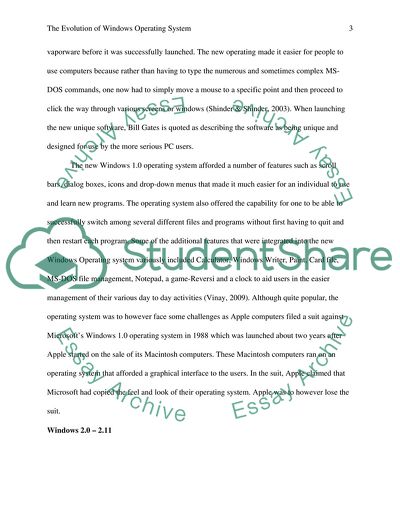Cite this document
(The Evolution of Windows Operating System Article Example | Topics and Well Written Essays - 4000 words, n.d.)
The Evolution of Windows Operating System Article Example | Topics and Well Written Essays - 4000 words. https://studentshare.org/information-technology/1825616-the-evolution-of-windows-operating-system
The Evolution of Windows Operating System Article Example | Topics and Well Written Essays - 4000 words. https://studentshare.org/information-technology/1825616-the-evolution-of-windows-operating-system
(The Evolution of Windows Operating System Article Example | Topics and Well Written Essays - 4000 Words)
The Evolution of Windows Operating System Article Example | Topics and Well Written Essays - 4000 Words. https://studentshare.org/information-technology/1825616-the-evolution-of-windows-operating-system.
The Evolution of Windows Operating System Article Example | Topics and Well Written Essays - 4000 Words. https://studentshare.org/information-technology/1825616-the-evolution-of-windows-operating-system.
“The Evolution of Windows Operating System Article Example | Topics and Well Written Essays - 4000 Words”. https://studentshare.org/information-technology/1825616-the-evolution-of-windows-operating-system.


